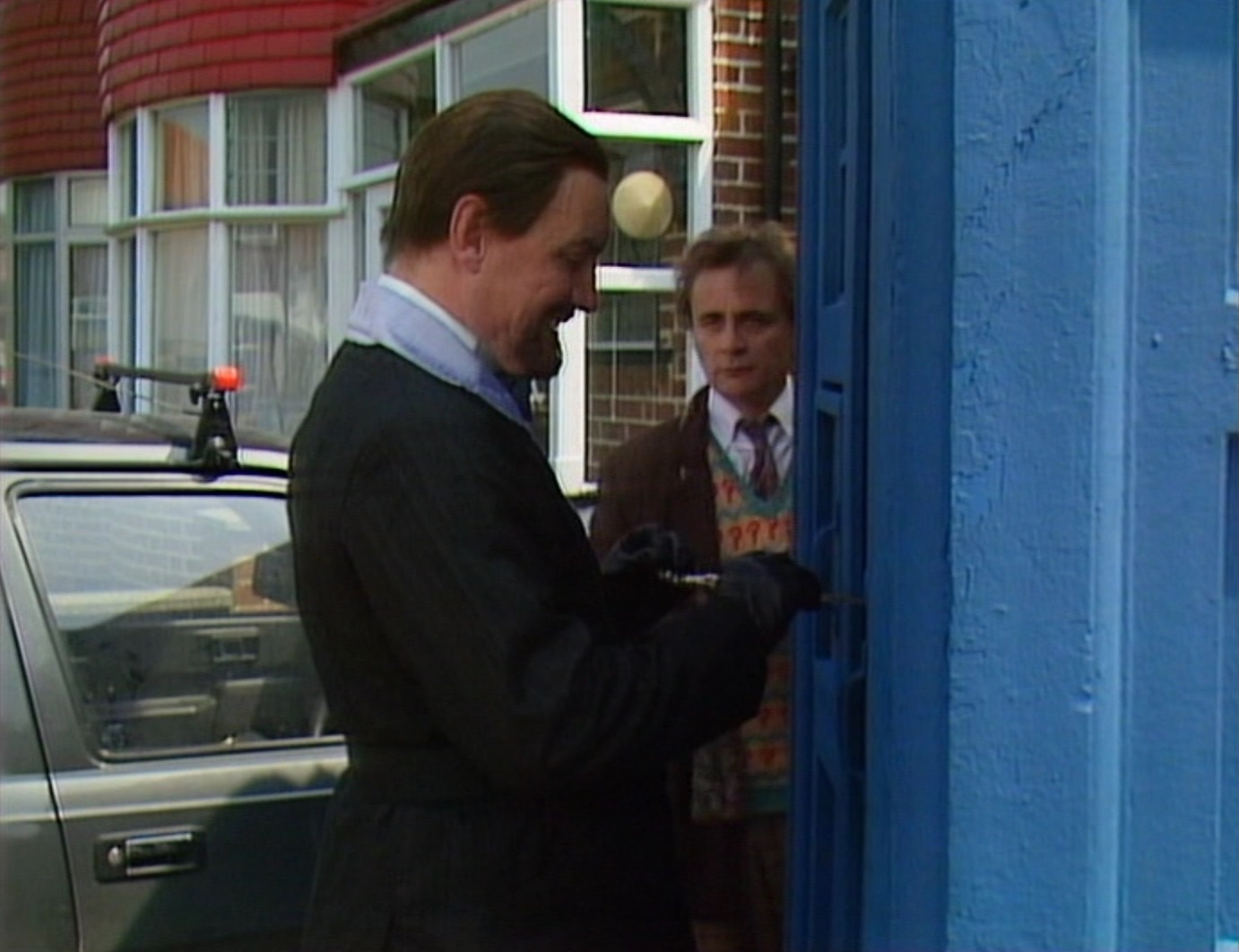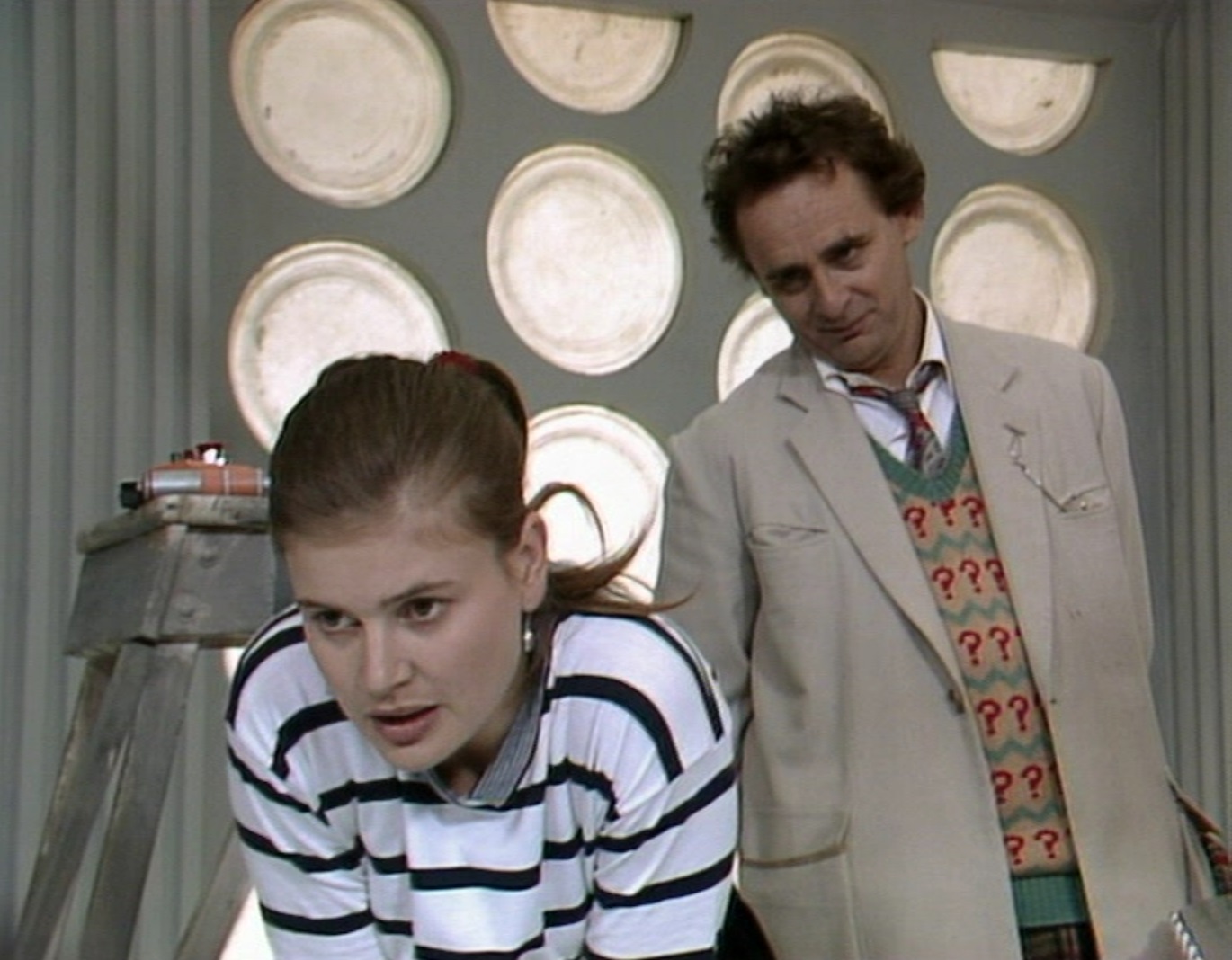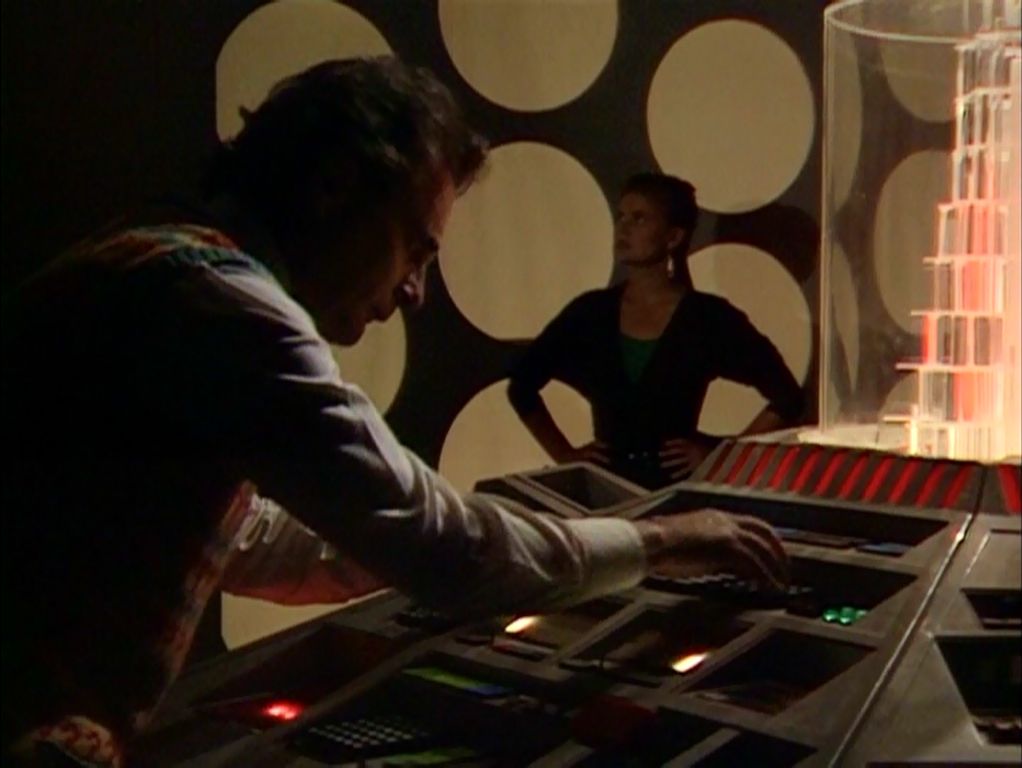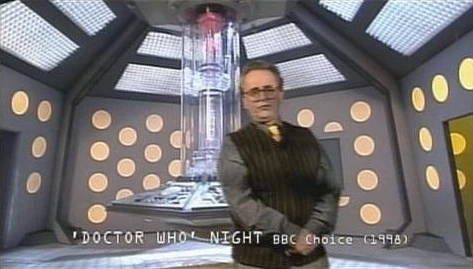You may not have noticed, but the Seventh Doctor’s TARDIS became distinctly absent in the show’s final seasons…
And by the TARDIS, we are of course referring to the TARDIS interior, not the time and space machine itself. That would be crazy. (Although there are a fair number of Jon Pertwee stories which don’t feature the TARDIS at all…)
To the casual viewer, this probably wasn’t obvious. Throughout the history of Doctor Who, it has often made good sense from a pacing point of view for the Doctor to land on a planet, step out of his phone box and launch straight into an adventure. And this was certainly true for the Seventh Doctor; many of his adventures had been trimmed down from four episodes to three, leaving little time for lengthy exchanges in the console room. This is in stark contrast to the Sixth Doctor’s first season, whose 45 minute episodes allowed for many, many lengthy arguments with Peri while the ship was in flight!
The shorter stories, therefore, were certainly a factor. But then so was the show’s budget. The producer John Nathan-Turner found himself increasingly stretched, despite producing shorter seasons, and therefore devised a schedule that would allow each series to comprise of two stories that were (almost) entirely studio bound, and two that were shot entirely on location. This saved time, and also saved money.
Thus, with the TARDIS interior being rooted in the studio, it simply wasn’t possible for the stories that were short entirely on location to feature TARDIS scenes. And so you will notice with adventures like ‘Silver Nemesis,’ ‘The Curse of Fenric’ and ‘Survival’ that there isn’t a console room in sight. This is particularly sad for ‘Survival,’ which turned out to be the last Doctor Who adventure of the Classic run.

(C) BBC
So is that the real reason? The lack of TARDIS was down to the tight budget and somewhat unusual production schedule? Well, not entirely.
For a start, the production team did, in fact, find a creative way to make the TARDIS set available for some of their ‘location only’ adventures. The first of these is ‘Delta and the Bannermen,’ which called for a very brief scene in the TARDIS showing the Doctor rescuing a stricken space bus. This scene was actually incorporated into the production of the following (studio bound) adventure ‘Dragonfire,’ and was easy enough to film as it only featured Sylvester McCoy and none of the other adventure-specific cast members.
The other exception is ‘The Greatest Show in the Galaxy,’ and this one is more interesting. This was originally meant to be a hybrid adventure, comprising location and studio filming, but an asbestos discovery at TV Centre meant that all of the studio work had to be cancelled. And indeed this would have resulted in the cancellation of the whole story had the production team not discovered that they could film their interiors in Elstree Studios’ car park – in tents!
And this included the TARDIS. The entirety of the set was constructed outside, and shot on location. The effect was seamless, and nobody would have noticed that these TARDIS scenes weren’t captured at TV Centre. But little did anyone know that this would actually be the last time the full TARDIS interior would be seen during the Classic run.

(C) BBC
This is where the issue of Doctor Who‘s budget reared its head again. The TARDIS interior had become increasingly dilapidated over the years, and by 1989 it had been in full use since 1983 and was in serious need of repair and an upgrade. But the production team didn’t have the time or resources to build a new one, despite the fact that the first story of Season 26 (‘Battlefield’) called for an exchange between the Seventh Doctor and Ace in the console room.
On this occasion, the solution that the production team came up with was to use just the TARDIS console and bathe the rest of the room in darkness, with only the silhouette of the roundels visible. And these were actually a backlit cloth, as the actual TARDIS walls were too damaged to use.
It seemed odd, for sure, but in true Doctor Who style the companion Ace addressed the glaring issues head-on and asked the Doctor why the TARDIS was so dark. It was because he was “working,” apparently.

(C) BBC
But obviously, the dim lights and cloth roundels were never meant to be a long-term solution. The team simply aimed to reach the end of the season without using any other TARDIS interiors, and you will notice that the subsequent stories ‘Ghost Light,’ ‘The Curse of Fenric’ and ‘Survival’ are distinctly TARDIS-less. Going forward, the team planned to design and build a brand new TARDIS interior to take the series boldly into the 1990s.
Alas, this new console room never advanced beyond the ideas stage, but a scale model based on these ideas was used as a backdrop in BBC Choice’s Doctor Who Night presented by Sylvester McCoy, giving fans a tantalising glimpse in what might have been had Doctor Who returned for a 27th season.

(C) BBC
Fans would have to wait until the Doctor Who TV movie of 1996 before the TARDIS was redecorated – this time with a Hollywood budget, a holographic ceiling, many shelves of gold dust, and an entire cloister room dedicated to the Eye of Harmony.
Did you notice the mysteriously ‘absent’ TARDIS towards the end of the Sylvester McCoy era? And would you have liked it to have featured more, or less? Let me know in the comments below.









Didn’t notice lack of tardis.
Interesting symmetry that the final series of classic Doctor Who had a false TARDIS wall as in the earliest (with photographic blowups). I thought in season 26 they were crude backlit cutouts though your photo clearly shows it was a cloth backdrop.
As a 9-year-old watching those stories I was always desperately disappointed that we never saw inside the TARDIS. I always wanted to see inside!
The main reason why no console room was simply the set was old and damaged. Not the first time. Tom Baker’s marvellous, wooden, secondary control room with its bureau desk style console, first seen in “Mask of Mandagera” suffered warping whilst in storage between seasons and thus was never used again. Pity, because it wasn’t favourite console room set.
Another factor we have to take into account is script editor Andrew Cartmel…who simply disliked scenes set inside the TARDIS!
The control room in Battlefield was not dimly lit not because the production team needed to hide the set. It was in fact because the script directions specified that the room should be in darkness, something I discovered when I wrote the info text for the blu-ray release.. It was merely fortuitious that it helped to hide the rudimentary walls.